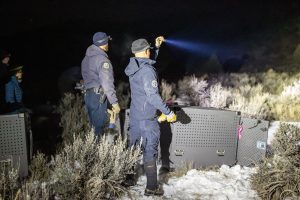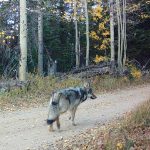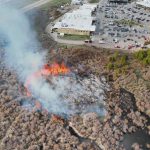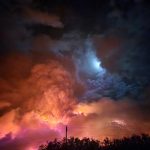Here’s where Colorado Parks and Wildlife is considering releasing wolves next year
The agency has started initial planning for a release in January 2026
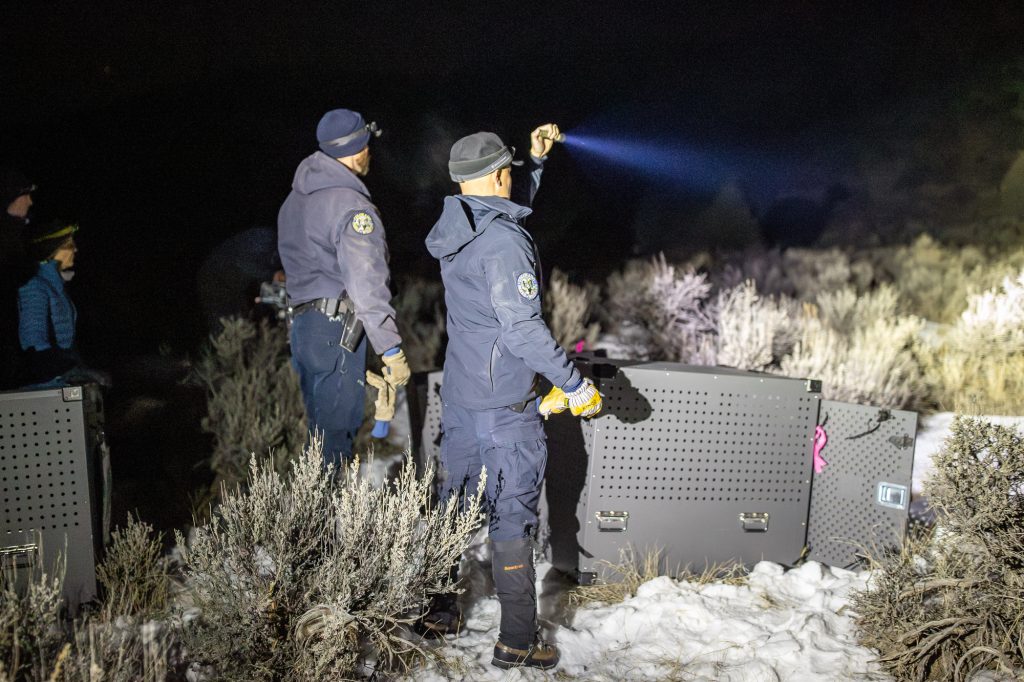
Colorado Parks and Wildlife/Courtesy Photo
For the first time in its wolf reintroduction program, Colorado Parks and Wildlife is considering release locations in southwest Colorado.
“We are planning for our third year of reintroductions,” said Eric Odell, the agency’s wolf program manager, at the July 17 Parks and Wildlife Commission meeting. “We anticipate that these reintroduction efforts will happen in January of 2026.”
Following the passage of the voter-mandated wolf reintroduction in 2020, Parks and Wildlife reintroduced the first 10 wolves from Oregon in December 2023 in Grand and Summit counties. For the second year of releases, it translocated 15 wolves from British Columbia to Pitkin and Eagle counties in January 2025.
These releases were part of the recommendation in its wolf management plan, which indicated the agency would relocate between 30-50 wolves in a three- to five-year window.
The state’s wolf plan also establishes geographic boundaries and restrictions on where gray wolves can and cannot be released. More specifically, there are two zones, one in the northwest — which falls along the Interstate 70 mountain corridor between Glenwood Springs and Vail and through the Roaring Fork Valley — and one just south of that in Gunnison and Montrose counties. Wolves may only be released on state-owned or private lands.

While the agency has looked to this northwest zone for its first two releases, Odell confirmed on Thursday that it would be focusing on the southwest polygon for the third year.
“Our local (Parks and Wildlife) staff have already reached out to the local stakeholders, stockmen groups to engage with some of those discussions. There’s meetings towards the end of this month on that,” Odell said.
One of the reasons the agency is considering going south is to spread out the wolves, especially as packs continue to form and they establish territories in the northwest.
“We’ve got wolves in … the northwest region now that are starting to establish territories and are beginning to defend those,” Odell said. “Reintroducing new wolves on top of those defended territories is a recipe for problems. … We don’t want to keep putting wolves on top of wolves, but there’s still a lot of good wolf habitat in Colorado.”
In southwest Colorado, Parks and Wildlife also has an agreement with the Southern Ute Indian Tribe, which manages the 3.7 million-acre Bruny Treaty Area in the San Juan Mountains. The agency’s wolf plan, and the subsequent agreement with the tribe, prohibit it from releasing wolves within this treaty area as well as within a 60-mile range of sovereign tribal lands in the region.
So far, Parks and Wildlife has not identified where the wolves will come from. However, Odell said the agency is already “in discussions to develop agreements with sources to complement the wolves that are already in Colorado.”
At a legislative hearing in June, Jeff Davis, Parks and Wildlife’s director, confirmed that this includes renewed discussions with the B.C. Ministry of Water, Lands and Resource Stewardship to extend its contract from 2025 for another batch of wolves.
Regardless of where the wolves are released, many of the animals continue to make significant treks across the state.
On Thursday, Odell shared that one of the females relocated from British Columbia traveled 2,469 miles between Jan. 16, when she was released in Eagle County, through June 30. This is about the equivalent of traveling from Denver to Nashville — and back. This behavior is one of the more interesting movement patterns the agency has seen from the wolves.
This wolf has averaged around 15 miles a day, making huge circles across the state — from Eagle County to Grand Junction, down through Middle Park to Gunnison, Montrose and back around again.
“(The wolf has) cycled around several times through all of western Colorado and really has not stopped moving,” Odell said, adding that she is “not stopping to spend too much time in any particular location.”

Support Local Journalism

Support Local Journalism
The Sky-Hi News strives to deliver powerful stories that spark emotion and focus on the place we live.
Over the past year, contributions from readers like you helped to fund some of our most important reporting, including coverage of the East Troublesome Fire.
If you value local journalism, consider making a contribution to our newsroom in support of the work we do.

